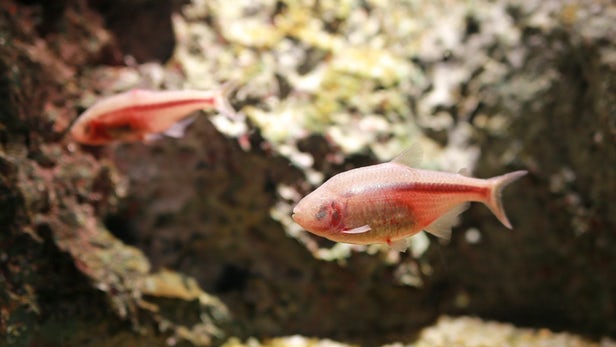Will You Be Healed by Fish Slime?
A century ago, millions of people died from various diseases because of a lack of effective antibiotics. Like so many other things in life, the medical world saw the discovery of dozens and dozens of new antibiotics, many created for a specific disease or infection.
Antibiotics soon were so abundant that they are found in soaps and animal feed. In some areas of the country, the water departments reported being able to detect antibiotics in the water supply, probably from animal feed lots, hand soaps and other sources.
With the abundance of antibiotics, some diseases and infections have been readily controlled while others have become resistant to certain antibiotics.
No, this is not evolution as many described, but a simple process similar to selective breeding. What happens is that at one point, a new antibiotic may kill off up to 95% of a targeted pathogen. But, 5% of that pathogen already contains the genetic information that makes it resistant to the antibiotic. Since this 5% are the only ones to survive and reproduce, we soon have an entire population of that pathogen that is now genetically resistant to the bacteria – hence – antibiotic resistant pathogens. Note that they don’t develop a resistance, a few already had the resistance.
This has led to deadlier pathogens called superbugs such as methicillin-resistant Staphylococcus aureus (MRSA), a deadly antibiotic resistant bacteria.
As more pathogens become resistant to antibiotics, the need for new antibiotics to fight them also increases. Over the years, researchers have turned to studying many different plants, fungus, algae and animals in hopes of finding a new antibiotic.
When I was in college, I used to volunteer in the animal resource center, where I milked scorpions, several species of rattlesnakes, 2 species of cobras, fer de lance (from South America) and a black mamba. The bulk of the venoms were used for the development of antivenom, but some of it was also used for medical research. I learned that there were some proteins in the rattlesnake venom that showed some promise to help with some heart conditions. The same is true with some species of poison dart frogs, as the components of the secretion on their skin is not only a deadly poison, but found to have some medicinal benefits.
Yes, researchers are constantly looking at the most unusual sources for what could be the next medical breakthrough. Researchers at Oregon State University turned to the thin layer of slime found on the skin of younger fish, as reported:
“Now a team has identified bacteria with promising antibiotic activity against known pathogens—even dangerous organisms, such as the microbe that causes MRSA infections—in the protective mucus that coats young fish…”
“According to Loesgen, who is at Oregon State University, while novel chemical reagents have been found in the human microbiome, the marine equivalent remains relatively unstudied. One potential goldmine of microbes is the mucus that coats the surfaces of fish. This viscous substance protects fish from bacteria, fungi, and viruses in their environment, trapping the microbes before they can cause infections. The slime is also rich in polysaccharides and peptides known to have antibacterial activity.”
Sandra Loesgen, Ph.D., the group’s principal researcher, stated:
“For us, any microbe in the marine environment that could provide a new compound is worth exploring.”
Molly Austin, an undergraduate chemistry student in Loesgen’s laboratory who worked on the project added:
“Fish mucus is really interesting because the environment the fish live in is complex. They are in contact with their environment all the time with many pathogenic viruses.”
For several years, doctors in hospital burn units have been using fish skin to help heal the burns on their patients. Could it be that some of the same properties found in the fish skin that helps burn victims heal be the same properties that provide the source for new antibiotics?
This is one fish tale that is true and may provide a whopper of a cure.









Recent Comments